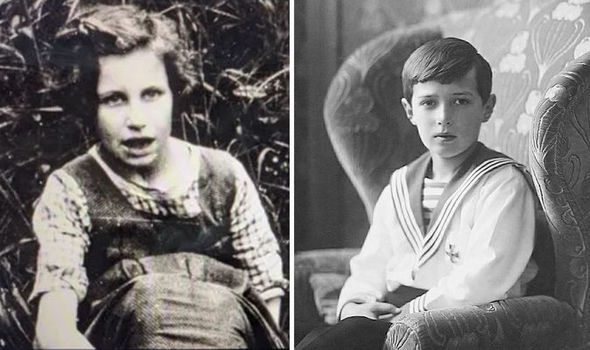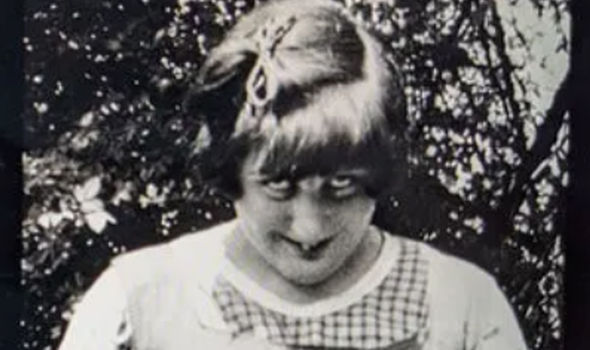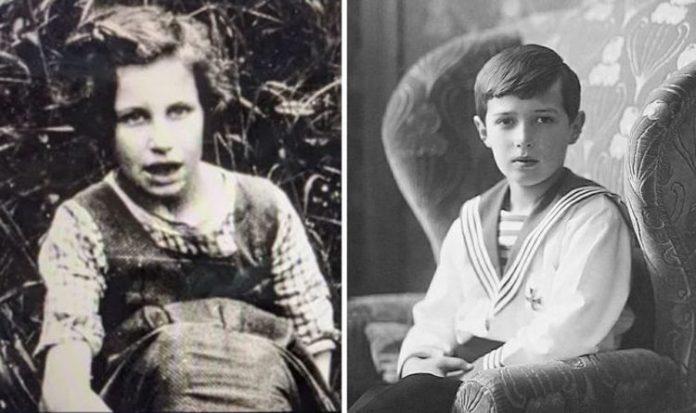Royal Family: Expert on ‘what the future holds for the Crown’
Nerissa and Katherine Bowes-Lyon, born in 1919 and 1926 respectively, were daughters of the Queen Mother’s brother John. Both sisters were declared dead in the 1963 Burke’s Peerage, which listed their death dates as 1940 and 1961 respectively. However, the sisters were actually alive, living in Earlwood Hospital in Surrey.
When Nerissa really died in 1986, only hospital staff attended her funeral and when she was buried in Redhill Cemetery, her grave was only marked with plastic tags and a serial number.
The year after her death, the hush up about the sisters came to light and the family decided to add a proper gravestone.
Katherine later died in 2014.
During their lives, they never received any money from the Royal Family aside from the £125 they paid to the hospital each year for their care.
READ MORE: Queen’s cousin’s funeral ‘attended by only hospital staff’

Katherine Bowes-Lyon (left); Alexei Nikolaevich, Tsarevich of Russia (right) (Image: Netflix / Wikimedia Commons)

Nerissa Bowes-Lyon (Image: Netflix)
The sisters were believed to have a genetic condition that caused their learning disabilities and had three cousins on their mother’s side who were also admitted to the hospital called Ideona, Rosemary and Ethelreda Fane.
In The Crown season four, Princess Margaret, played by Helena Bonham Carter, discovers that the cousins are still alive and is furious with the Queen Mother for allowing the family to hide them away.
She brands it “wicked, cold-hearted and cruel” to shunt away the sisters in the way they did.
The Queen Mother, played by Marion Bailey, explains that they did it because they feared if people knew about the cousins, they would “question the integrity of the bloodline”.

Helena Bonham Carter as Princess Margaret in The Crown (Image: Netflix)
She tells Margaret: “Can you imagine the headlines if it got out? What people would say?
“The hereditary principle already hangs by such a precarious thread. Throw in mental illness and it’s over.
“The idea that one family alone has the automatic birthright to the Crown is already so hard to justify.”
However, it could be argued that this logic backfired on the Royal Family as they appeared callous and cold-hearted when it finally came to light how they had treated their own family.
DON’T MISS
Queen missing connection to father after Christmas plan change [INSIGHT]
Prince Philip’s friend claimed ‘highly charged chemistry’ between them [QUOTE]
Prince Edward angered Prince Charles by ‘invading William’s privacy’ [REVEALED]

Rasputin’s reputation was damaging for the Romanovs (Image: GETTY)
This story of the cousins bears a stunning resemblance to that of the Romanovs, who tried to hide the fact that the heir to the Russian throne, Alexei, was unwell during Tsar Nicholas II’s reign.
Alexei ‒ the last Romanov prince actively lined up to one day claim the Russian throne before the 1917 revolution ‒ had been born with haemophilia, which he inherited through his mother Alexandra, Empress of Russia.
His condition meant his body did not produce one of the proteins necessary for blood-clotting and meant he could bleed easily and fatally.
His hemophilia was so severe that trivial injuries such as a bruise or a nosebleed were potentially life threatening.
Russia: Grand Duke Nikolai Romanov Jr. s remains arrive in Moscow
Two navy sailors were assigned to monitor him and prevent injuries, which still sometimes took place.
Sometimes the disease caused pain in his joints and the sailors carried him around when he was unable to walk.
According to his French tutor, Pierre Gilliard, the nature of his illness was kept a state secret.
Instead of admitting his illness, they invited Grigori Rasputin, a peasant faith healer, to the Palace and begged him to make their son better.
However, the purpose of Rasputin’s employment was kept secret from the public and this air of mystery soon fuelled rumours that he was pulling the Tsar’s strings, having an affair with his wife and even putting curses on people.
Rasputin’s dreadful reputation helped discredit the Tsarist government and contributed to the anti-monarchist movement that proved deadly for the family.
Indeed, it is considered a key factor that led to the Russian revolution, as Vladimir Lenin’s Bolsheviks overthrew the Romanov dynasty for good in 1917 ‒ just one year after Rasputin was assassinated.
The stories of the Bowes-Lyon cousins and Alexei are parallel in that both families tried to hide their illnesses to protect the royal reputation.
However, in both instances it ended up backfiring ‒ for the British Royal Family, it simply made them appear heartless, while for the Romanovs it had far more bloody consequences.







